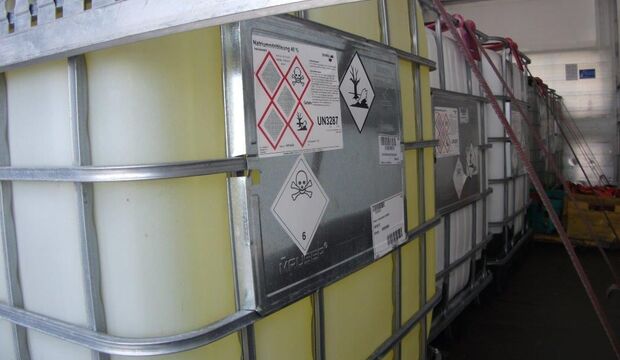What is dangerous goods?
In logistics, hazardous goods are materials or substances that can be dangerous during transport, storage or handling.
These include chemicals, flammable, explosive substances and radioactive or corrosive materials. These require special precautions and knowledge and must always be labelled. They are categorised into nine classes and are subject to strict regulations.
What is ADR?
ADR stands for "Accord européen relatif au transport international des marchandises dangereuses par route"
or "European Agreement concerning the International Carriage of Dangerous Goods by Road". This agreement regulates the cross-border transport of dangerous goods by road in Europe and beyond. There are currently 54 ADR countries worldwide. It contains regulations and standards for:
Packaging:
Ensuring that dangerous goods are transported in suitable and safe containers.
Labelling:
Guidelines for the correct marking and labelling of dangerous goods to facilitate identification and handling.
Documentation:
Required transport documents and information to inform the carrier and consignee of the nature of the hazard.
Vehicles:
Requirements for the equipment and construction of transport vehicles.
Training:
Training and certification of drivers and other persons involved to ensure that they have the necessary knowledge and skills to transport dangerous goods safely.
Safety measures:
Measures to prevent accidents and protect people and the environment in the event of an accident.
The ADR is regularly updated to take account of new findings and developments in the transport of dangerous goods and to continuously improve safety.
What is the GGVSEB?
The Ordinance on the National and International Carriage of Dangerous Goods by Road, Rail and Inland Waterways
(Dangerous Goods Ordinance for Road, Rail and Inland Waterways - GGVSEB) of 17 June 2009 replaced the "Dangerous Goods Ordinance for Road and Rail - GGVSE" and the "Dangerous Goods Ordinance for Inland Waterways - GGVBinSch" on 25 June 2009. The predecessor to this is still known today as the GGVS, the Ordinance on the National and International Carriage of Dangerous Goods by Road (Gefahrgutverordnung Straße - GGVS), the last ordinance of which was incorporated into the GGVSE and its successor GGVSEB.
The ordinances regulate the national and international transport of dangerous goods by various modes of transport in Germany. Changes in the international legal standards ADR, RID and ADN always require an adaptation of the national GGVSEB.
It would otherwise only be possible to impose the corresponding safety obligations on those involved in the transport of dangerous goods for every possible situation at an unjustifiably high cost. The regulation therefore places a general obligation on all parties involved to take precautions to prevent damage. The precautions should be tailored to the type and possible effects of foreseeable hazards.
For example, when exceeding the speed limit, a driver must assume that a collision with another vehicle could result in the uncontrolled release of dangerous cargo and cause considerable environmental damage. This would therefore be a foreseeable danger.




